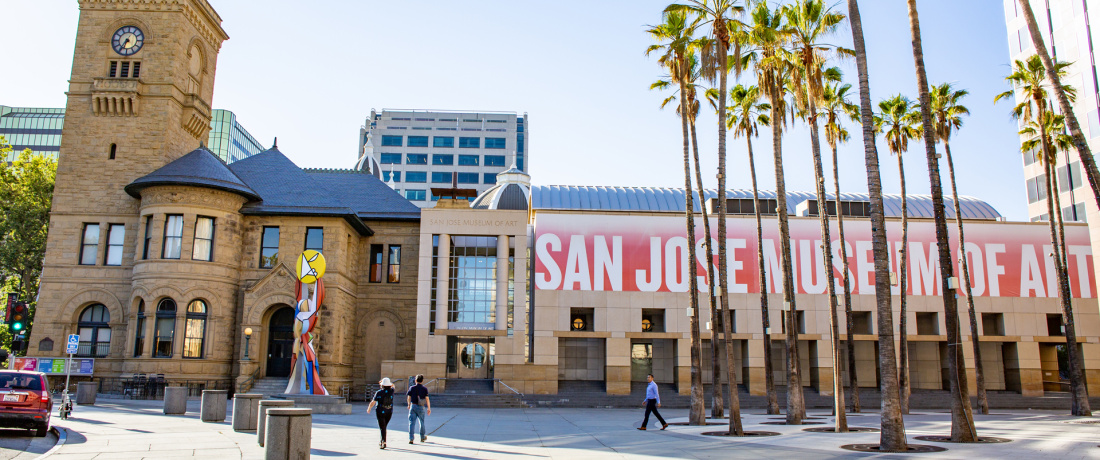Land Acknowledgement
The San José Museum of Art is on the unceded ancestral land of descendants of the Ohlone nation. The Ohlone nation is represented by numerous tribes, Indigenous organizations, and individuals with whom we strive to build relations. SJMA acknowledges and celebrates the continued presence of our region’s multiple Indigenous communities, expresses gratitude for their guidance and teachings, and pledges an ongoing commitment to listening, learning, and sharing.
SJMA's Commitment to Our Indigenous Neighbors
We are mindful of the need for ongoing commitments to hold ourselves accountable to our Indigenous communities. With this in mind we commit to:
-
Build resources for our staff and public that deepen our understanding of issues faced by Indigenous people
-
Be proactive about inviting Indigenous people to engage with our work
-
Listen deeply to feedback from our Indigenous communities
-
Be a good guest on the lands we inhabit and act from a space of humility and respect
Land Acknowledgement FAQs
Q: What is a land acknowledgment? Why does SJMA have one?
A: A land acknowledgement is a formal and public recognition that the land we live on was originally inhabited by Indigenous peoples. The statement is a reminder of this history and a recognition of the ongoing relationship that Indigenous people maintain to the land. SJMA’s land acknowledgment lives on the website and is read at the opening of public programs to honor Indigenous communities past, present, and future.
The statement will be reviewed, assessed, and updated as new research, conversations, and relationships are discovered and created.
Q: How did we develop this statement?
A: SJMA’s land acknowledgment was developed by a cross-institutional pilot committee of the Museum’s Equity Task Force, with input from staff and volunteers. In crafting this statement the pilot team spoke with representatives of local Indigenous communities and participated in a four-part training conducted by the Healing and Reconciliation Institute, an organization that offers consulting, education, and Indigenous governance support. Our land acknowledgment was shaped in alignment with an institutional commitment to the core value of inclusion and written intentionally to be encompassing of the many Indigenous peoples, whether tribally affiliated or not, with history, experiences, and ongoing stakes in the lands on which we live and work.
Resources
- Native Land is a resource to learn more about Indigenous territories, languages, lands, and ways of life.
- State of California Native American Heritage Commission is a free, online multimedia tool to help students and the public visualize California before, during, and after European occupation, with a focus on the Native American experience, through a collection of map layers and informational pages.
Pronunciation guide
- Ohlone: oh-LOW-nee
We value your feedback
For questions, feedback, and concerns, contact
krapp@sjmusart.org
msamay@sjmusart.org
